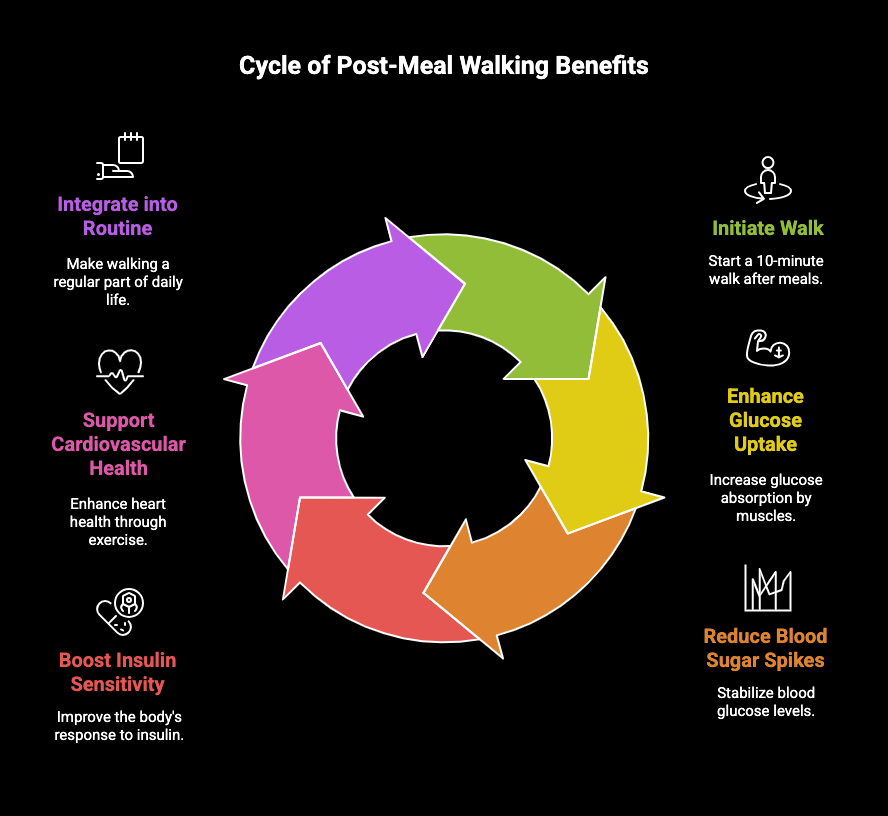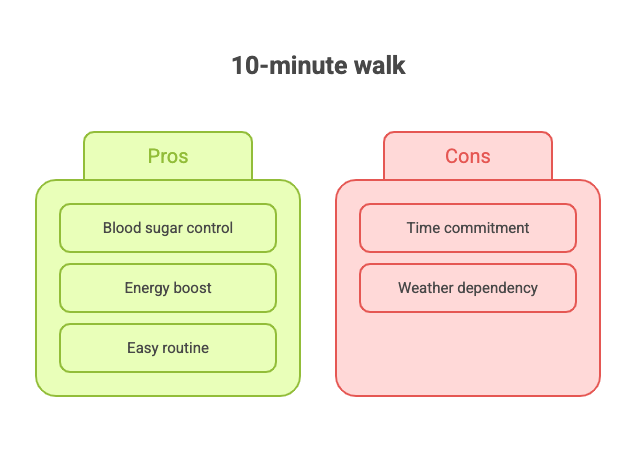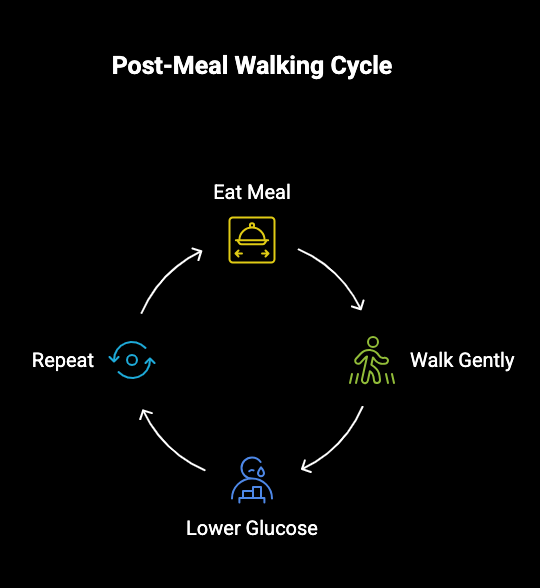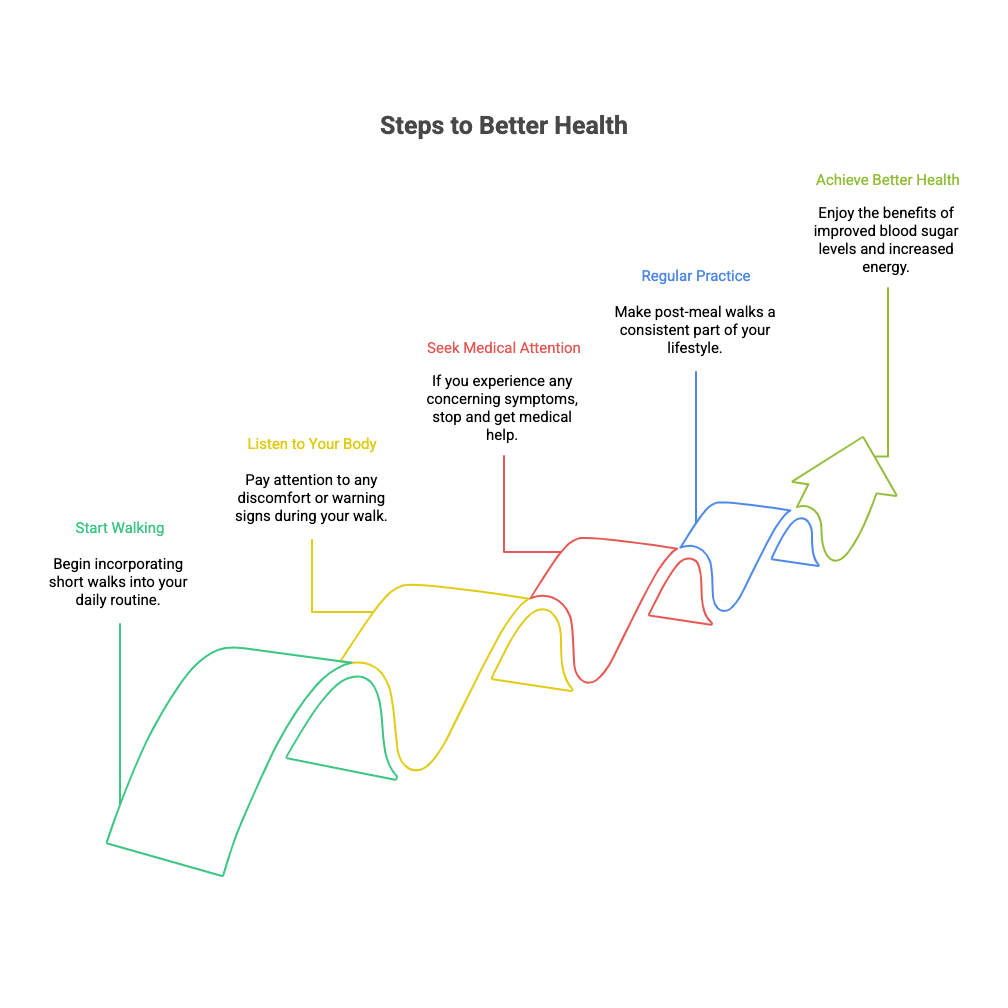Key Highlights
- A brief 10-minute walk after meals can significantly lower blood sugar by promoting physical activity and enhancing glucose uptake in healthy adults.
- Post-meal walks are proven to reduce blood sugar spikes, keeping blood glucose levels steady.
- Studies show these short walks provide better blood sugar control than walking at other times of day.
- Walking boosts insulin sensitivity, which is especially important for people with diabetes or prediabetes.
- Even brisk, short walks help manage postprandial glucose levels and support overall cardiovascular health.
- Integrating post-meal walks into a routine is a simple, effective way to support long-term blood sugar management.

Reclaim Your Health: The Power of a 10-Minute Walk to Lower Blood Sugar
Managing blood sugar levels is crucial for overall health, especially for those who have been diagnosed with type 2 diabetes, are pre-diabetic, or are simply looking to boost their energy levels. An easy and effective strategy you might not yet have considered? A simple 10-minute walk.

Why Walking Works
After a meal, if you notice your blood sugar level spikes, don’t just sit back. Instead, get moving! Walking activates your muscles, allowing them to act like sponges, soaking up glucose from your bloodstream. This movement effectively lowers the post-meal blood sugar peaks, making it a simple yet effective tool for maintaining healthier blood sugar levels.
The Science Behind the Tip
As per the American Diabetes Association, taking a walk for just 10 minutes after each meal can significantly impact your glucose levels. The key here is moving consistently but gently. It’s neither about speed nor distance. Avoid running or any kind of strenuous activity immediately after your meal. Instead, focus on slow, gentle, and consistent movements.

Listening to Your Body
While the walk should be relaxing and straightforward, it’s important to listen to what your body is telling you. If you experience any dizziness, shortness of breath, or chest pain, it’s crucial to stop and seek medical attention immediately.
Incorporating this small habit into your daily routine can be an easy step toward better health. When you make post-meal walks a regular practice, you not only help manage your blood sugar levels but also set the stage for a healthier, more energetic you.

Conclusion
Making the time for a short stroll after meals may seem insignificant, but when it comes to managing your blood sugar, it can make a world of difference. Reclaim your health, one step at a time, by adopting this simple habit that’s good for your body and easy to integrate into your lifestyle. Thank you for taking the time to learn about this powerful health tip. Here’s to a healthier, more energetic you!
Frequently Asked Questions
Is walking after every meal safe for everyone?
While walking post-meal is generally safe, some individuals, particularly those with specific health conditions, should consult their healthcare provider before starting. Factors like heart problems or severe diabetes complications may require tailored guidance to ensure safety during physical activities.
Can a short walk still help if I can’t do a full 10 minutes?
Yes, even a short walk can benefit your blood sugar levels. Brief physical activity stimulates glucose uptake by muscles and may help mitigate the post-meal spike, making it a valuable alternative if a full 10-minute walk isn’t feasible.
Does walking at other times of day offer the same benefits as post-meal walks?
Walking at other times of the day can provide health benefits, but post-meal walks are particularly effective for managing blood sugar levels. The timing enhances glucose uptake and minimizes spikes, making it a unique practice that may not be replicated by walks taken later.


